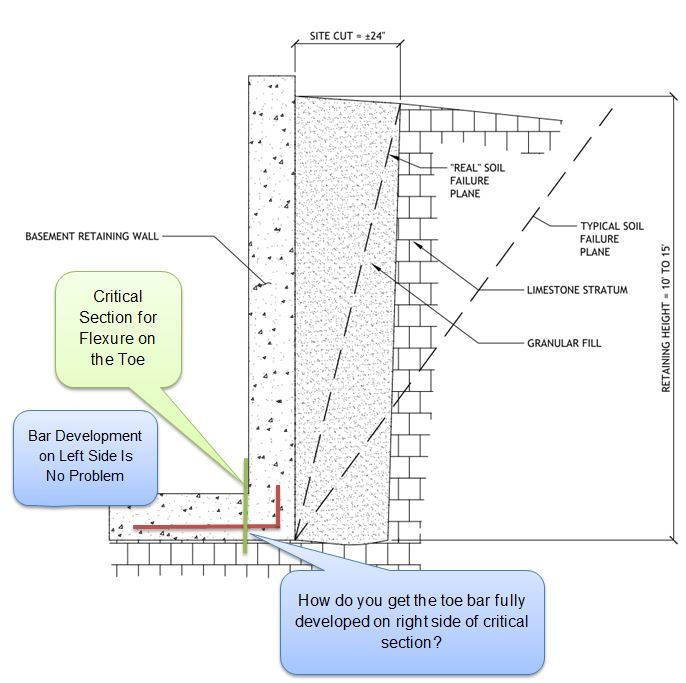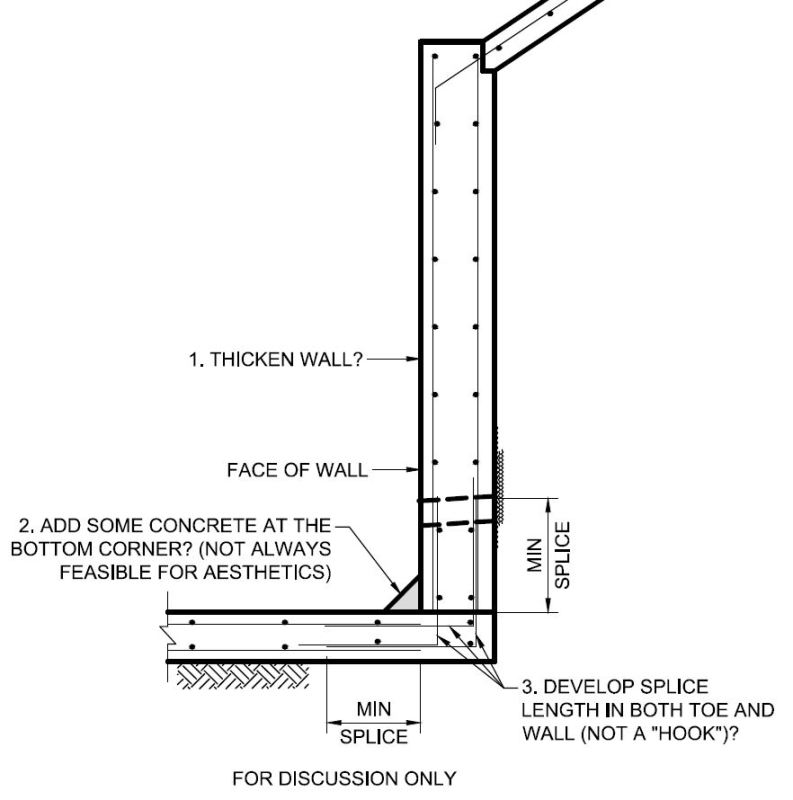JoelTXCive
Civil/Environmental
- Jul 24, 2016
- 933
I have a question regarding L shaped cantilevered retaining walls. I see these walls all the time, and obviously they are not falling down, so I must be missing something.
If you go with an L-shaped wall, then how do you get your flexural toe steel fully developed. It is my understanding that you want the steel fully developed in BOTH directions from the critical section. If you are dealing with an 8" inch wall that has ~2" inch side cover, then you are only left with 6" inches to develop your bars. Even with a hook, that is not a lot of space. (See attached diagram.)
I would think you would need to batter the back wall, or extend a small heel out to provide bar development space?

If you go with an L-shaped wall, then how do you get your flexural toe steel fully developed. It is my understanding that you want the steel fully developed in BOTH directions from the critical section. If you are dealing with an 8" inch wall that has ~2" inch side cover, then you are only left with 6" inches to develop your bars. Even with a hook, that is not a lot of space. (See attached diagram.)
I would think you would need to batter the back wall, or extend a small heel out to provide bar development space?


![[wink] [wink] [wink]](/data/assets/smilies/wink.gif)
